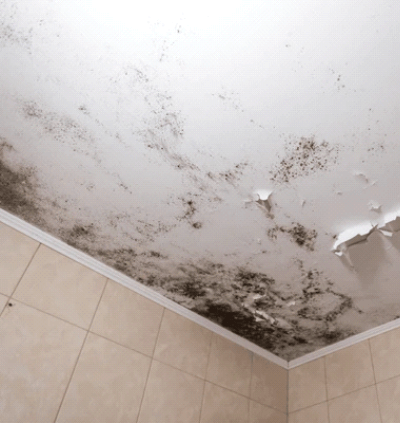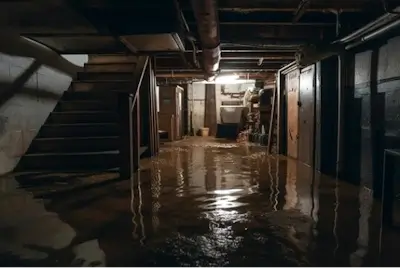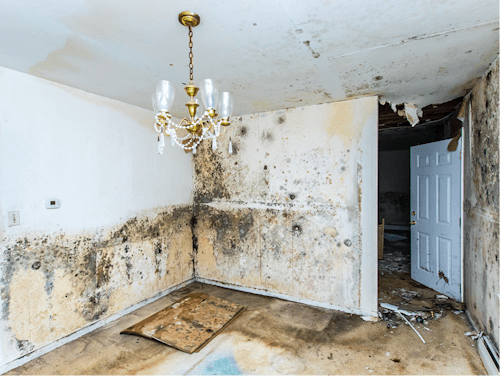Water leak in hidden spots is the mold difficult to identify. By the time you notice it, it has already given way to mold growth. Unfortunately, water leak behind walls shows signs at a later stage. You cannot fix it unless you know where exactly the leak is. Such water damages cause damage to your property.
Knowing the signs and symptoms of hidden water leaks can help you avoid unnecessary damage. A routine check can also save you from a lot of hassle and health issues. In this article, we will get into the causes, signs, and prevention tips for water leaks.
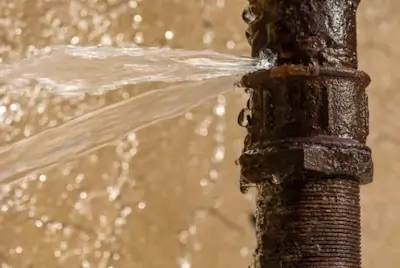
How to Identify a Water Leak Behind Walls
Identifying a water leak behind walls isn’t easy, but it’s possible. Water always leaves some unpleasant indicators where it’s leaking. You can call water leak detection services if you notice any dampness of the wall or high moisture levels in your house.
If you want to do it yourself, you need a thorough checkup of your walls. Put your ear to the walls and try to listen to the pipes. Any water leak will make some dripping noise. Check your crawl space as well. Water leaking behind walls ends up in the crawl space. In many cases, if the leak is small, the water doesn’t reach the crawl space but gets absorbed into the walls. See if your walls are damp. Finally, pay attention to the signs of a water leak.
Signs of Water Leak Behind Walls
Following are the signs that indicate a water leak behind the walls of your home:
Damp Odor
A dank, musty smell often signifies leakage in a wall, especially with above-grade walls. A leaking wall in a basement is more common than on ground levels, so musty smells will be more common in the basement.
Damp Spots
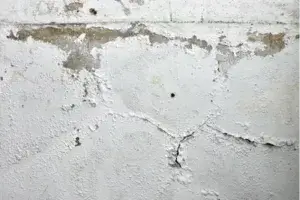
Dampness in walls is a sign of water damage. If there’s a leaking pipe, it will allow water to seep into the walls and floors. These damp spots on the walls do not go away on their own.
Water trapped behind a wall has no other way to evaporate except through the surface of the walls.
Mold Growth
As you might already know, mold is attracted to humid areas and wet surfaces. If you allow water to sit on your walls for 24 hours, mold will grow there. Fixing water leaks behind walls is very important for preventing mold and mildew problems.
Damaged Paint
Any damage or deterioration of the paint is a sign of a water leak. As water gets absorbed into the walls, the pain might start bubbling up or cracking. If you have wallpaper, it will start getting damp. The dampness of the wallpaper and the peeling paint are signs of water damage behind the walls.
Discoloration and Dark Spots
When water mixes with the chemicals in the wall paint, it causes some discoloration. As water evaporates from the wall, it leaves behind a stained spot. This is a sign that your walls are exposed to water leakage. In cases such as these, by the time the water damage is visible on the outer wall, the drywall has been damaged significantly.
Causes of Water Leakage in Walls
Water leaks behind walls happen for several reasons. But the major cause is often a burst pipe. Any fault with the pipes will eventually lead to a water leak. There a several reasons why that might happen to your walls:
Faulty Plumbing
Bad plumbing can cause a lot of problems. If the pipes are not properly installed, they will start leaking inside the walls. A broken or poor seal is also a cause of water leakage. If one pipe is leaking, it will lead to rusting that will damage other pipes as well.
Poor Quality Material
If the material used is not good quality, it will be corroded easily. Low-quality metal pipes are easy to break and crack as well. Make sure you use good quality pipes that are durable, reliable, and long-lasting.
Crack in the External Wall
Sometimes a pipe is not to blame for the water leak behind walls. A crack in the exterior wall can lead to water damage. The rain water can easily get into the wall through cracks and cause damage to the drywall. This will lead to mold in walls.
Water Leak Detection Tools
Since the water leak inside the wall remains hidden, you cannot see it unless you tear down the wall or cut it into the drywall. This process will require a lot of repairs and will be costly. You can avoid the hassle by using the following tools:
Invest in a Moisture Meter
This device is very helpful in monitoring moisture levels in the house. You check the moisture in the wall by placing the meter on the wall. Check along the length and breadth of the wall. If the moisture is above normal, it indicates a leak.
Get an Infrared Camera
An infrared camera detects the water leak by showing the temperature. If there’s a moist spot it will be cooler than the rest of the wall. Move the camera around the wall and see if there are any cold spots. A cold spot is where there’s a leak.
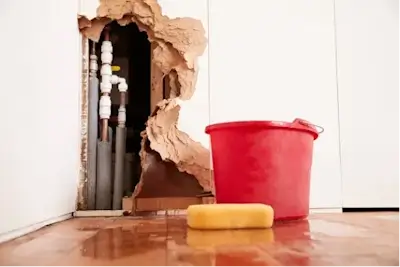
How to Fix Water Leak Behind Walls?
Once you have detected and located the leak, you can take the following steps to fix it:
Turn Off The Water Supply
Once you are sure that there’s a leak, turn off the water supply. This will prevent further water spillage and allow you to fix the issue.
Dry and Clean Up The Space
Once the water supply is turned off, you need to let the water dry out. Cut out the drywall and clean up all the water behind. You can use a dehumidifier to speed up the process.
Fix the Leak
Assess the damage and see what you can do about it. If the seal is broken, you apply a new sealant to the dried pipes. If there’s a rusty or broken pipe, you need to replace it.
Fix the Wall
Once you have repaired the leaking pipe, it’s time to fix the wall. You will need a new piece of drywall as per the measurements of the hole in the wall.
24/7 Service Pros Can Do it For You
If you don’t know how to fix water damage or have no experience with plumbing, we suggest you leave the task to the professionals. If the water leak has led to mold, you have bigger health issues. In such cases, 24/7 Service Pros can help identify and fix the water leaks. Contact us for a timely remediation.
Which Areas We Serve in South Florida?
- Hollywood
- Davie
- Miami Beach
- Weston
- Hallandale Beach
- North Miami Beach
- Sunrise
- Tamarac
- Coconut Creek
- Fort Lauderdale
- Miami
- Boca Raton
- Hialeah
- Margate
- Pembroke Pines
- Dania Beach
- Lauderhill
- Delray Beach
- Pompano Beach
- Deerfield Beach
- Coral Springs
- Plantation
- Doral
- Aventura
- Miramar
- Sunny Isles Beach

